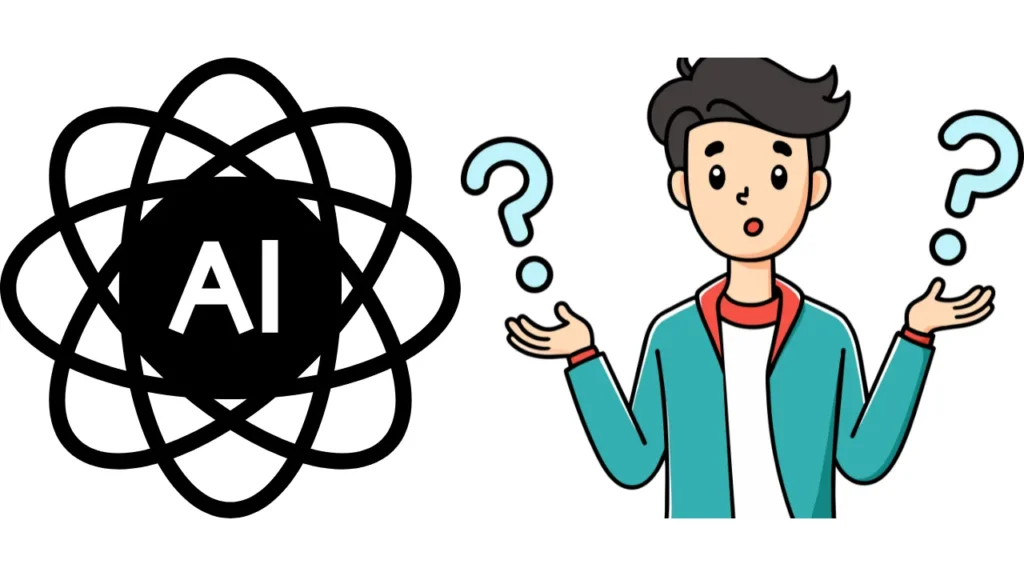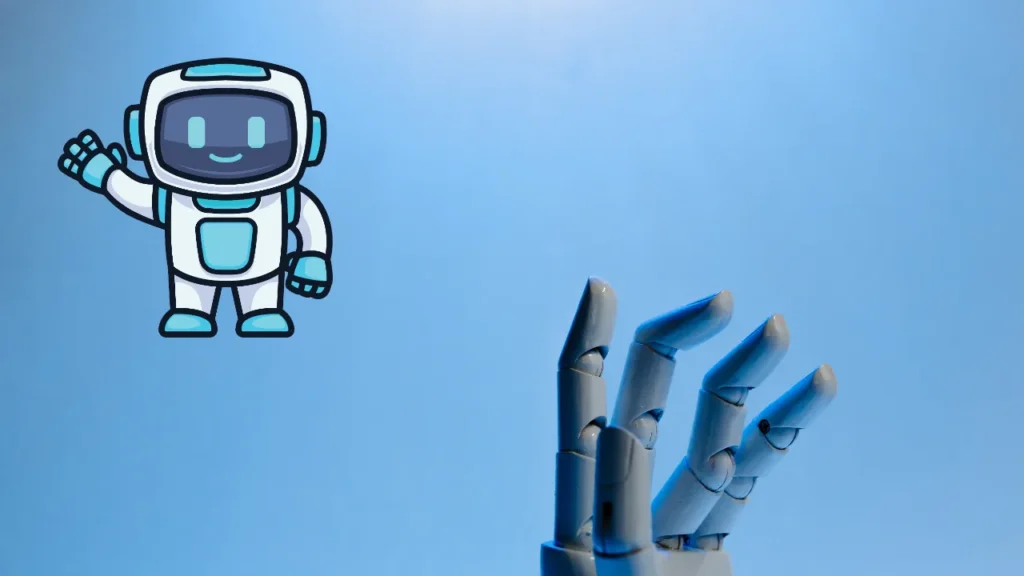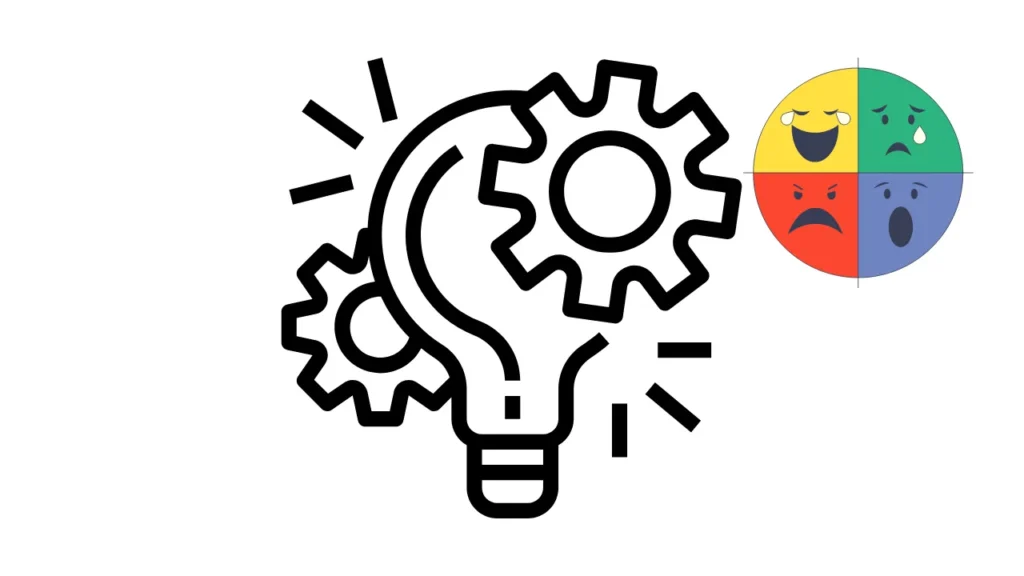Over the past few years, the term artificial intelligence (AI) has been increasingly popular. It is hailed as a game-changing technology that might revolutionize nearly every sector, including healthcare, finance, transportation, entertainment, agriculture, energy, and document security.
What can humans do that AI can’t?
AI has been the focus of numerous conversations, debates, and controversies, and it would undoubtedly appear different next week than it does today.
To avoid AI detection, use Undetectable AI. It can do it in a single click.
Table of Contents
What Exactly is AI?

The goal of computer science’s artificial intelligence (AI) field is to build intelligent machines that can learn and behave similar to people. AI doesn’t suddenly become extremely intelligent. The basic premise is that you start by feeding a computer massive amounts of data, such as millions of game plays or cat images.
After analyzing this data, the AI system gains the ability to identify trends or forecast outcomes. It improves at these jobs based on the data it observes. Therefore, AI is an effective instrument that can be used for things such as suggesting movies you prefer or assisting doctors in analyzing medical scans. It is not some sort of robot mastermind.
Key Takeaways
AI capabilities and human intelligence comparison:- Creativity Limitation: AI can imitate creative processes but lacks the genuine originality and emotional depth of human creativity.
- Emotional Intelligence Gap: Unlike humans, AI cannot truly understand or feel emotions, limiting its ability to provide empathetic interactions and nuanced support.
- Contextual Understanding: AI struggles with common sense reasoning and contextual comprehension, often making simplistic errors humans would easily avoid.
- Adaptive Learning Challenge: Current AI systems cannot continuously learn and adapt in real-time, unlike humans who can seamlessly incorporate new information and experiences.
What Can Humans Do that AI Can’t?

Since its conception, artificial intelligence (AI) has advanced considerably and is now a fundamental part of our everyday life. AI is currently a crucial tool in numerous sectors due to technological breakthroughs, which have ended up in a notable rise in the automation of regular processes and some employment.
But its extensive use also prompts worries that technology could someday outperform humans in some domains. It is reasonable to ponder what it is that humans are better at and AI is worse at, given that AI can now write essays, create original graphics, recognize faces, and even forecast market trends.
It becomes necessary to take into account AI’s limits as it develops further.
Machine Intelligence Versus Human Intelligence
It is inaccurate to believe that AI would replace human labor because AI and human workers have different skills and attributes. Artificial intelligence (AI)-based robots are quick, precise, and always logical, but they lack human-essential traits such as intuition, emotion, and cultural sensitivity. There are differences between human and machine intelligence.
Advanced computers are considered intelligent because of their capacity to learn and form opinions based on the information they are given. Human intelligence, however, is distinct and extends beyond the capacity for information-based decision-making. Artificial intellect (AI) can be defined as a machine that mimics human intellect in its actions and decisions.
AI mimics human speech, behavior, and decision-making, according to Alan Turing’s theory. Because it can recognize patterns in data and carry out repetitive activities without becoming physically tired, this kind of intelligence is helpful in organizational settings.
However, whereas humans are able to envision, feel, assess, and adjust to changing circumstances, artificial intelligence is only as accurate as the data it is taught on. AI works best in a closed management system with precise regulations for low-level, repetitive tasks.
Human capabilities, on the other hand, are adaptable and enable people to change their attention from immediate to long-term issues. These skills are specific to humans and, unlike AI, do not depend on a steady stream of outside information.
The Common-Sense Dilemma of AI
Humans possess common sense because we create enduring mental representations of the objects in our environment, including their appearance, behavior, and capabilities. Such mental models are not produced by deep neural networks. They lack particular, significant depictions of things such as a coffee cup or a dwelling.
Instead, they employ probability to generate useful predictions based on statistical information from raw data. This statistical method is effective for a wide range of jobs. It isn’t always precise, though, and it can make simple, commonsense errors that people would never make.
Image identification tasks are one instance of how machine learning lacks common sense. A machine learning model may not always be able to discern between identical objects or comprehend the context of an image, even after being trained on a sizable dataset of images.
A machine learning algorithm that has been taught to identify animals, for example, can mistakenly identify an image of a zebra crossing a road as a giraffe on a bicycle. This is because the model is just predicting based on the patterns it saw in the training data and has not learned the obvious fact that zebras cannot ride bicycles.
This lack of common sense draws attention to the shortcomings of the machine learning models that are currently in use and the necessity for novel strategies that take into account past knowledge and gain a deeper understanding of the problem’s context. Elias Bareinboim claims that AI systems have no idea what causes what.
A significant component of what we refer to as common sense is the ability to comprehend cause and consequence, an area in which modern AI systems are clueless. Columbia University’s new Causal Artificial Intelligence Lab is led by Elias Bareinboim.
Since its start, the AI community has debated the issue of common sense. One of the earliest papers on artificial intelligence was written by John McCarthy in 1958 and was named Programs with Common Sense.
Emotional Intelligence and Empathy
The ability of artificial intelligence (AI) systems to recognize emotions and react to them in predetermined ways has improved. They are still unable to completely understand and feel emotions in the same way that people do, though.
An AI system, for example, might be able to tell when a client is upset, but it is unable to sense the feelings of aggravation and emotion the consumer is experiencing. This restricts its capacity to offer clients sincere compassion and assistance.
Furthermore, while AI systems may classify human words as either positive or bad, they are unable to understand the emotions and subtext that underlie them. Sarcasm, cultural allusions, and linguistic subtleties can change the meaning and feelings conveyed, but AI is still not sophisticated enough to comprehend such subtleties.
The things that are not expressed can also convey feelings. It is challenging for AI to offer true emotional support since it is unable to comprehend this subtext. Researchers studying artificial intelligence concur that while AI systems are unable to feel emotions of their own, they can simulate them, including empathy.
The question of whether an emotion simulation actually shows a grasp of emotions or if it is still artificial is hotly debated. It’s still uncertain if an AI system is emotionally intelligent, even if it can identify and respond to emotions.
Constant Learning and Adjustment
New information is continuously created in real-world settings. People can readily incorporate this knowledge into their behavior and adapt in real time as needed. However, AI is constrained by a training and deployment approach that is batch-based and does not permit ongoing adaptability.
This kind of human capacity is termed in the world of machine learning as continual or lifelong learning. Training and deployment are the two stages of the traditional AI development process. To learn how to do a certain task, an AI model is trained using a fixed dataset.
After training is finished, the model is used to evaluate fresh data using the knowledge it gained from the training set. However, the model should have to undergo through a laborious retraining procedure if it needs to be updated with new data. At least not yet, continuous learning is not possible with traditional deep learning techniques.
The main challenge is a phenomena termed catastrophic forgetting, which occurs when new information in a neural network might obliterate prior learnings. People are capable of constant learning and adaptation. Although continuous learning is advancing, AI systems do not yet possess this capability.
What AI Can Do in 2024?

Recently, AI has been the talk of the town, and with a valid reason. Here are a few examples of its remarkable abilities:
Automation
AI may automate time-consuming and repetitive processes such as testing, quality assurance, and data input, giving staff members additional time to work on strategic and innovative projects. Automation may lower expenses and increase production, in particular sectors such as manufacturing, logistics, and customer service.
Prediction
AI is capable of analyzing enormous volumes of data, finding patterns, and accurately forecasting future occurrences. Applications for this skill range from stock market forecasting to weather forecasting.
Personalization
AI has the ability to customize products and services to fit each user’s tastes, requirements, and habits. AI can evaluate consumer data to provide tailored recommendations and enhance the user experience, which makes this capability particularly useful in marketing.
Speech and Image Recognition
AI has uses in entertainment, healthcare, and security since it can identify and categorize speech and images. AI, for instance, may evaluate medical images to help with surgery or identify illnesses.
Language Processing
Chatbots, virtual assistants, and other communication tools can react to user requests, commands, and questions due to AI’s ability to comprehend and understand natural language.
Write Academic Essays
It’s a hot topic that’s been in the news a lot, and depending on your stance, the good news or bad news is that AI can write academic essays at the moment. Even though they aren’t literary geniuses, they are performing sufficiently to pass tasks at the undergraduate level!
Create Visual Art
Another subject to cause disagreement is this one.
Does an AI-generated piece qualify as art?
It is what we would call art with an asterisk. Artificial intelligence cannot produce art on its own. For starters, it should be instructed to produce art, and machine learning is used to provide it with the inspiration it needs. But after being given directions, we’ve seen a variety of stunningly rendered images in addition to some eerie and dark things.
Make Investments
Given the vast amount of data available on investing and finances, artificial intelligence’s forecasting powers continue to grow every day.
Is it lawful?
Is it fair?
For both, the answer is YES! Artificial intelligence is used by at least 52% of US financial institutions to trade stocks and create investment plans! AI has made it possible for investors and stock traders to make better decisions quickly and accurately.
Read Also >>> Hix AI Humanizer
What AI Cannot Do in 2024?

Even if AI has advanced significantly in recent years, there are still certain obstacles to overcome. What AI cannot do, at least not yet, can be discussed in this section.
Creativity
Although AI is capable of coming up with new concepts, it lacks human creativity and originality. AI is not able to recreate human creativity, but it can imitate it.
Emotional Intelligence
Understanding human emotions and behavior requires emotional intelligence and empathy, both of which AI lacks. Because of this restriction, AI cannot take the place of human interaction in professions such as social work, counseling, or therapy.
Judgement
AI is capable of making data-driven decisions, but it is incapable of moral or ethical judgments. AI is incapable of taking into account the wider ethical, social, and cultural ramifications of its choices.
Common Sense
AI is devoid of human intuition and common sense. AI is prone to errors, in particular when handling novel circumstances that call for human expertise and judgment.
Contextual Understanding
AI is unable to comprehend the context of events, in particular when handling complicated or ambiguous situations. AI is capable of misinterpreting data and making bad decisions.
Multitask
Although AI inventors are working to advance the technology so that it can execute multiple jobs simultaneously, the majority of AI systems are highly trained to solve particular challenges.
With Google Assistant’s Routines feature, Google recently made major progress in this area. However, that kind of multitasking involves the AI performing a number of specific actions in response to a single user instruction.
Conclusion: What Can Humans Do that AI Can’t?
AI has advanced significantly and is already a fundamental component of our everyday life. But because it lacks human traits such as creativity, intuition, feelings, common sense, and cultural sensitivity, technology has limitations.
Notwithstanding these drawbacks, AI has shown itself to be a potent instrument in a variety of fields and applications, including automation, data processing, and decision-making. Its forecasts are impacted by its inability to create mental models and its intelligence being restricted to the dataset it is trained on.
AI’s batch-based training and deployment process restricts its capacity to learn in real-time, and it is unable to feel emotions as humans do. Thus, it’s acceptable to claim that even though AI has quite a bit of capabilities.
Human ingenuity cannot be replaced by it. The soul of every form of art lies in this inventiveness. What is fundamental and should be safeguarded is human creativity, or the capacity to generate ideas.
FAQs: What Can Humans Do that AI Can’t?
What are the key differences between human intelligence and artificial intelligence?
The primary difference between human intelligence and artificial intelligence lies in the way each processes information and experiences the world. Humans excel at understanding context, emotions, and social dynamics, which allows for nuanced decision-making and interpersonal relationships.
On the other hand, AI systems operate based on algorithms and large amounts of data, lacking the ability to perceive emotional nuances or understand complex human experiences. While AI can analyze data and make predictions effectively, it cannot replicate the depth of human creativity and emotional understanding.
Can AI replace human creativity?
No, AI cannot replace human creativity. Although AI systems can generate art, music, and text based on existing patterns and styles, they do so without genuine inspiration or emotional connection. Humans possess an innate ability to create based on personal experiences, emotions, and cultural contexts.
This unique blend of experiences fuels innovation and creativity in ways that AI simply cannot replicate. While AI can help enhance creative processes by providing tools and suggestions, the spark of true creativity remains a distinctly human capability.
What role does emotional intelligence play in human interactions?
Emotional intelligence is fundamental for navigating complex social interactions, as it enables humans to recognize, understand, and respond to their own emotions and those of others. This capability fosters effective communication, empathy, and relationship building, which are necessary in both personal and professional settings.
AI, despite advancements in AI development, still cannot understand or replicate the subtleties of human emotions. Therefore, AI cannot make decisions that require empathy or emotional understanding, which limits its effectiveness in roles that depend on human connections.
Are there tasks that humans excel at that AI systems struggle with?
Yes, there are numerous tasks where humans excel compared to AI systems. For instance, jobs requiring creativity, emotional intelligence, and complex decision-making in uncertain environments are areas where AI still struggles.


